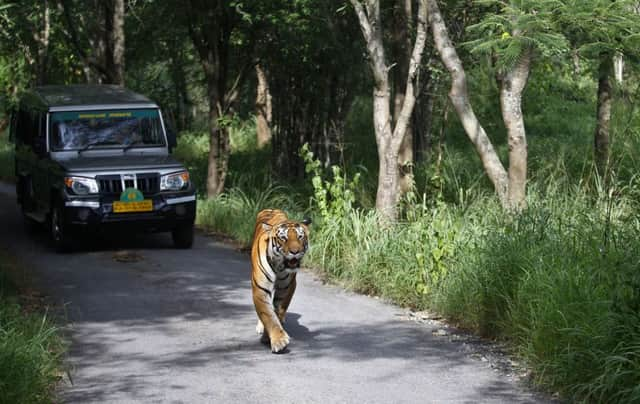Wildlife groups say 41 tigers died in India this year


India’s National Tiger Conservation Authority and wildlife group TRAFFIC say only seven of the cats died from natural causes, one was killed by authorities and the rest were illegally poached between January and August.
In January, Indian environment authorities had claimed that conservation efforts were working as the number of tigers in the country had risen to 2,226 in 2014, up from 1,706 counted in 2010.
Advertisement
Hide AdAdvertisement
Hide AdExperts say the partial death toll proves India was not doing enough to protect the endangered big cats, noting that 66 tigers died last year.
Of those which died naturally this year, two were killed in tiger battles, which experts say are becoming more frequent as the big cats vie for territory while their habitats shrink.
Wildlife experts say tigers are facing increasing threats as their traditional forests are cleared to make way for huge power projects, roads and human habitats as the country pushes ahead with rapid industrialisation and economic development.
Shekhar Niraj, head of TRAFFIC-India, said: “We are losing buffer areas around the tiger reserves every day and this is worrisome.”
Niraj added that, coupled with the decline in deer, wild boar and other smaller animals that tigers prey on, the loss of buffer areas outside tiger reserves was increasingly driving the cats to move outside their established territory into human settlements .
An estimated 100,000 tigers roamed India’s forests 100 years ago. Their numbers declined steadily till the 1970s, when India banned tiger hunting and embarked on a programme to create national parks and wildlife sanctuaries. Conservation efforts began to pay off around 2010, when tiger numbers began to slowly rise.
India faces intense international scrutiny over its tiger conservation efforts as it has nearly three-quarters of the world’s estimated 3,200 tigers.
The illegal trade in tiger skin and body parts still remains a stubborn and serious threat.
Advertisement
Hide AdAdvertisement
Hide AdTiger organs and bones fetch high prices on the black market because of demand driven by traditional Chinese medicine practitioners.
India is also roping in celebrities to promote its tiger conservation programme.
On Tuesday, the western state of Maharashtra announced that it was appointing Bollywood superstar Amitabh Bachchan as a tiger ambassador to create awareness.